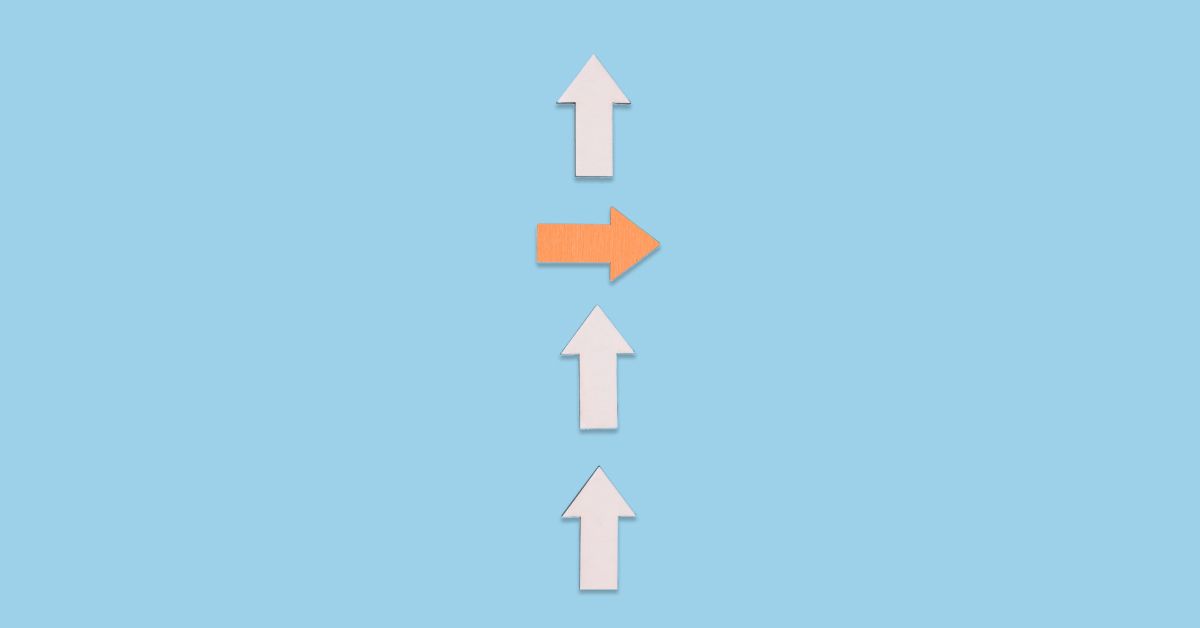Work style: Definition, types and questions to ask your employees for smoother collaboration

Have you ever found yourself watching "The Avengers" and thinking, "If only my workplace had a Nick Fury who could manage a team of unique talents so effectively?"
While superhero dynamics are entertaining, managing a team of supportive individuals with diverse skills and work styles is challenging. In reality, a workplace excels by recognizing and leveraging these differences, which are crucial for productivity and harmony.
In 2024, as workplaces continue to evolve and adapt to new norms, understanding and accommodating various work styles is more important than ever.
Whether you're in a traditional office setup or navigating the remote work landscape, appreciating diverse work styles can lead to higher employee satisfaction, better problem-solving, and a more innovative and collaborative team culture.
So, how can you create this adaptable and inclusive work environment? We'll explore the definition, benefits, and best practices for accommodating different work and working styles to help your organization thrive in 2024 and beyond.
Work style meaning
Work style refers to the unique way an individual approaches tasks, manages time, interacts with colleagues, and processes information. By identifying the main working styles, and leveraging one's work and own working style well, professionals can enhance productivity, job satisfaction, and team dynamics.
Different work styles can include analytical, where individuals focus on data and details; structured, where there is an emphasis on organization and planning; and social, which highlights collaboration and communication.
Knowing your work style helps in selecting roles that align with your strengths and preferences, fostering a more harmonious and effective work environment. Employers can also benefit by tailoring management strategies to fit the diverse work styles of their team, thereby optimizing performance and engagement.
Why are work styles important?

Understanding work styles is vital in the modern professional environment as it directly impacts productivity and team dynamics. It defines how individuals approach tasks, communicate, align tasks, and collaborate, making it essential for both personal and organizational success.
- Enhanced productivity: Recognizing and aligning tasks with an individual's work style can significantly boost efficiency and output. People who work in ways that suit their preferences are more likely to be focused and motivated.
- Improved team collaboration: Awareness of different work styles fosters better communication and collaboration within teams. By understanding each other's approaches, team members can work more harmoniously, reducing conflicts and enhancing collective performance.
- Effective task delegation: Managers who understand the work styles of their team members can delegate tasks more effectively. Assigning roles based on individual strengths ensures that tasks are completed more proficiently and with higher quality by a team member.
- Personal growth and satisfaction: When individuals work in environments that suit their styles, they experience greater job satisfaction and personal growth. This alignment reduces stress and increases overall well-being, leading to higher retention rates.
- Strategic planning and innovation: Diverse and detail oriented work style bring a range of perspectives and problem-solving approaches to the table. This diversity can drive innovation and strategic planning, enabling organizations to adapt and thrive in competitive markets.
6 Types of work style to understand your employees’ behavior

Understanding the diverse work styles of employees is essential for fostering a productive and harmonious work environment. Here are six distinct and team oriented styles that can help managers and team leaders better understand employee behavior and improve team dynamics:
- Independent: Employees with an independent and detail oriented work style thrive on autonomy. They prefer minimal supervision and excel when given the freedom to manage their own tasks. These individuals are self-motivated and often bring innovative solutions, making them valuable for projects requiring creativity and initiative.
- Collaborative: Collaborative workers excel in team settings. They value input from others and are adept at working within groups to achieve common goals. These employees are essential in roles that require frequent interaction and coordination with team members.
- Analytical: Analytical individuals are detail-oriented and methodical. They excel in roles that require critical thinking, data analysis, and problem-solving. Their precision and ability to process complex information make them indispensable for tasks requiring accuracy and thoroughness.
- Structured: Employees with a structured work style prefer clear guidelines and organized workflows. They thrive in environments with well-defined processes and predictable routines. These individuals ensure consistency and reliability in task execution, making them suitable for roles that demand meticulous planning and organization.
- Flexible: Flexible workers adapt easily to changing circumstances and are comfortable with ambiguity. They are resourceful and can handle multiple tasks simultaneously. This work style is advantageous in dynamic environments where priorities frequently shift.
- Supportive: Supportive employees are nurturing and empathetic. They prioritize the well-being of their colleagues and excel in roles that involve mentoring, coaching, or providing assistance. Their interpersonal skills and dedication to fostering a positive work culture are invaluable for team cohesion and morale.
Work style vs. work ethic: What’s the difference?

Understanding the difference between work style and ethic is crucial for optimizing workplace performance and management strategies. Although they are often used interchangeably, they refer to distinct aspects of an individual's professional behavior logical work style.
Definition
- Work style: This refers to the unique way an individual approaches tasks, manages time, and interacts with colleagues. It encompasses how people organize their work, their preferred methods for completing tasks, and how they adapt to various work environments.
- Work ethic: This is a set of moral principles that guide an individual's attitude toward their work. It includes values such as diligence, reliability, and a commitment to quality. Work ethic determines the level of effort and integrity an employee brings to their job.
Nature
- Work style: Inherently personal and varied, work style is shaped by personality traits, preferences, and experiences. It can be categorized into different types such as independent, collaborative, structured, and flexible.
- Work ethic: More universal, work ethic is rooted in cultural, societal, and individual values. It is less about how work is done and more about the dedication and attitude brought to work.
Impact on Performance
- Work style: Affects how tasks are approached and completed. Understanding an employee's work style helps in assigning tasks that align with their strengths, thereby enhancing productivity and job satisfaction.
- Work ethic: Influences consistency, quality, and reliability. Employees with a strong work ethic are more likely to be dependable and produce high-quality work consistently.
Management Strategies
- Work style: Managers should recognize and accommodate different work styles to create a balanced and efficient team dynamic. This includes flexible scheduling, varied task assignments, and personalized feedback.
- Work ethic: Encouraging a strong work ethic involves setting clear expectations, recognizing and rewarding hard work, and fostering a culture of integrity and accountability.
Work style behaviors to observe in your employees as a manager

Observing work style behaviors in employees is essential for managers to foster a productive and efficient work environment. Recognizing these behaviors helps in task assignment, team dynamics, and personal development. Here are key work style behaviors to observe:
- Punctuality: Notice if employees consistently meet deadlines and attend meetings on time. This indicates a structured and detail oriented work style.
- Task prioritization: Observe how employees prioritize their workload. Efficient prioritization reflects strong organizational skills.
- Team participation: Watch for employees who actively engage in team discussions and contribute ideas. This shows a collaborative work style.
- Conflict resolution: Note how employees handle disagreements. Those who seek amicable solutions exhibit strong interpersonal skills.
- Analytical thinking: Identify employees who approach problems methodically, gathering data and evaluating options before making decisions. This reflects an analytical work style.
- Creative solutions: Look for those who offer innovative and out-of-the-box solutions, indicating a flexible and creative work style.
- Autonomy: Observe employees who work well with minimal supervision, taking initiative and managing their tasks independently. This signifies an independent work style.
- Self-motivation: Notice those who consistently show drive and enthusiasm without external prompts, reflecting a strong internal motivation.
- Handling change: Monitor how employees respond to changes in tasks or procedures. Those who adapt quickly demonstrate a flexible and detail oriented work style.
- Multi-tasking: Observe the ability to handle multiple tasks simultaneously without compromising quality, showcasing resourcefulness and adaptability.
- Mentoring: Notice employees who offer guidance and support to colleagues, fostering a nurturing and collaborative environment.
- Empathy: Observe those who show understanding and consideration for others' perspectives and feelings, indicating strong interpersonal skills.
How to determine which work style your employees use?

Determining the preferred working style of your employees is crucial for optimizing team performance and fostering a productive work environment.
By using cooperative work, free working style assessment and understanding each employee's unique approach to tasks, managers can tailor their leadership strategies effectively. Here are key methods to identify work styles:
Observation
- Daily interactions: Observe how employees interact with colleagues and handle their daily tasks. Look for patterns in their behavior, such as whether they seek collaboration or prefer working independently.
- Task management: Notice how employees prioritize and manage their workload. Those who maintain strict schedules and deadlines likely have a structured and detail oriented work style, while those who adapt to changes easily may have a flexible style.
Feedback and surveys
- Direct feedback: Ask employees directly about their preferences and work habits. Regular check-ins and one-on-one meetings can provide valuable insights into their work styles.
- Surveys and assessments: Utilize surveys and self-assessment tools designed to evaluate work styles. These instruments can reveal preferences for autonomy, collaboration, structure, or flexibility.
Performance metrics
- Project outcomes: Analyze the results of various projects and tasks. Employees who consistently deliver high-quality work independently may have an analytical or independent work style.
- Team contributions: Evaluate contributions in team settings. Those who frequently engage and support team efforts likely have a collaborative or supportive work style.
Personality tests
- Behavioral assessments: Implement personality tests like the Myers-Briggs Type Indicator (MBTI) or DiSC assessment to gain a deeper understanding of each employee's work style. These personality test and tools can identify traits that correlate with specific work behaviors.
Role-specific observations
- Adaptability in different roles: Rotate employees through various roles and observe their adaptability and performance. This can help identify whether they thrive in structured, creative, or dynamic environments.
20+ Questions to ask to find your employees’ workstyle

Understanding your employees' different working styles is vital for effective team management and productivity. By asking targeted questions, managers can gain insights into how their employees prefer to work and how they can be most effective. Here are 20+ questions to help identify work styles:
- How do you prioritize your tasks when managing multiple deadlines?
- Do you prefer to work on one task at a time or multitask?
- What tools or methods do you use to stay organized?
- Do you prefer working independently or as part of a team?
- How do you handle conflicts within a team setting?
- What role do you typically take in group projects?
- How do you prefer to receive feedback and guidance?
- Do you prefer face-to-face meetings, emails, or instant messaging for communication?
- How often do you feel the need to check in with your manager or team?
- How do you approach solving complex problems?
- Can you describe a time when you had to think outside the box to solve a challenge?
- Do you rely more on data and analysis or intuition and creativity when making decisions?
- Do you work best in a structured environment with clear guidelines or a more flexible setting?
- How do you adapt to changes in your work environment or schedule?
- What type of work environment makes you most productive (e.g., quiet, collaborative, fast-paced)?
- What motivates you to perform at your best?
- How do you handle stress and tight deadlines?
- What type of projects or tasks do you find most fulfilling?
- What are your short-term and long-term career goals?
- How can your current role help you achieve these goals?
- What skills do you want to develop further?
What is a work style conflict ?
A work style conflict arises when employees with differing approaches to tasks and collaboration encounter friction in the workplace. These conflicts stem from variations in how individuals manage time, communicate, and solve problems.
For example, a structured worker who values clear guidelines may clash with a flexible colleague who prefers a more adaptable approach. Such disparities can lead to misunderstandings, decreased productivity, and increased tension within teams.
Recognizing and addressing work style conflicts involves promoting open communication, fostering mutual respect, and implementing strategies that accommodate diverse working and proximity work style methods.
By understanding these conflicts, managers can enhance team dynamics and create a more harmonious and supportive work style and environment. Addressing work style conflicts proactively ensures that all employees can work effectively together in cohesive teams, leveraging their unique strengths to achieve common goals.
7 Work style examples to get inspired from

Understanding diverse work styles can inspire individuals and teams to more of cooperative work style to optimize their performance and more effective collaboration together. Here are seven work style examples, each illustrated with an example:
1. Independent
- Characteristics: Self-motivated, prefers minimal supervision, thrives on autonomy.
- Workplace example: Jane, a software developer, excels when working on coding projects independently. She sets her own deadlines, finds innovative solutions, and requires little oversight to deliver high-quality work.
2. Collaborative
- Characteristics: Values teamwork, enjoys brainstorming sessions, communicates effectively.
- Workplace example: Tom, a marketing specialist, thrives in team meetings where ideas are exchanged freely. His ability to integrate feedback and coordinate with colleagues makes him invaluable during campaign planning and execution.
3. Analytical
- Characteristics: Detail-oriented, methodical, relies on data and research.
- Workplace example: Lisa, a financial analyst, spends her days meticulously analyzing financial reports and market trends. Her keen attention to detail and methodical approach ensure accurate financial forecasts and risk assessments.
4. Structured
- Characteristics: Prefers clear guidelines, follows organized workflows, consistent.
- Workplace example: John, a project manager, uses detailed project plans and timelines to keep his team on track. His structured approach ensures that all tasks are completed efficiently and on schedule.
5. Flexible
- Characteristics: Adapts easily, handles multiple tasks, comfortable with ambiguity.
- Workplace example: Sarah, an event coordinator, juggles multiple events simultaneously. Her ability to adapt to last-minute changes and handle various tasks makes her successful in a fast-paced, unpredictable environment.
6. Supportive
- Characteristics: Nurturing, empathetic, focuses on team well-being.
- Workplace example: Michael, a human resources manager, is known for his empathetic listening and support. He helps resolve employee conflicts, provides guidance, and ensures a positive workplace culture.
7. Creative
- Characteristics: Imaginative, innovative, thinks outside the box.
- Workplace example: Emily, a graphic designer, consistently produces visually stunning and innovative designs. Her creativity helps the company’s branding stand out in a crowded market.
Significance of diversity in an organization for enhanced work styles and productivity

Diversity in an organization is essential for enhancing work styles and boosting productivity. A diverse workforce brings varied perspectives and unique skill sets, fostering innovation and comprehensive decision-making.
Employees from different backgrounds contribute distinct ideas, leading to creative solutions and effective problem-solving. This diversity in thought and experience also ensures that teams can handle a wide array of tasks more efficiently, adapting swiftly to market changes.
A diverse environment boosts employee engagement and motivation, as individuals feel valued and included. This leads to higher job satisfaction and overall performance.
Diverse teams are more resilient and adaptable to changes and challenges, providing the organization with a competitive edge. Embracing diversity not only enhances productivity but also drives sustainable growth and success for the organization.
Tips for improving collaboration with people of different work styles

Improving collaboration among employees with different working styles is essential for creating a cohesive and productive work environment. By recognizing and accommodating diverse perspectives and approaches to work, managers can foster better teamwork and enhance overall performance. Here are key tips for achieving this:
- Understand and respect differences: Take time to learn about each employee’s work style and promote an inclusive atmosphere where all styles are valued.
- Effective communication: Clearly communicate goals, roles, and deadlines to ensure everyone is on the same page and encourage active listening during meetings and discussions.
- Flexible work environment: Create a flexible work environment that allows for different work styles, such as providing options for remote work or flexible hours.
- Varied task assignments: Assign tasks based on individual strengths and work styles to maximize efficiency and satisfaction.
- Team building activities: Implement team-building activities that promote understanding and collaboration among different work styles.
- Regular feedback: Provide regular feedback that is constructive and specific to each work style to help individuals understand how they can better contribute to the team. Consider conducting post-mortem meetings after major projects to reflect on team dynamics, identify friction points between work styles, and gather feedback to strengthen collaboration moving forward.
- Use technology: Utilize collaboration tools and platforms that accommodate various work styles, like project management software and communication apps.
Significance of team engagement software in bridging the gap between different work styles

Employee engagement surveys are a critical component of team engagement software, offering deep insights into the workforce's sentiments and needs.
These surveys empower organizations to gather valuable feedback, enabling them to understand employee satisfaction, identify areas for improvement, and foster a culture of continuous development.
By regularly conducting pulse surveys, organizations can gain real-time insights into employee morale and engagement levels, addressing issues promptly and keeping their finger on the pulse of employee satisfaction.
Customized questionnaires that align with organizational goals and culture can uncover specific areas of concern or opportunity, providing a more precise understanding of employee needs and expectations.
Encouraging honest feedback through anonymous surveys helps employees feel safe to voice their true opinions, leading to more accurate and actionable insights. The data collected from these surveys provide a solid foundation for strategic decision-making, ensuring that actions taken are backed by evidence and are more likely to be effective.
Benchmarking and trend analysis of survey results over time or against industry standards help organizations track progress, recognize patterns, and remain competitive in their employee engagement efforts.
Detailed reports and analytics from survey data highlight key drivers of engagement and areas requiring attention, guiding management in implementing targeted interventions. Engagement software often includes tools to boost survey participation rates, such as reminders, easy access via multiple devices, and incentivization.
Seamless integration with existing HR tools allows for a holistic approach to employee engagement, combining survey insights with performance data, training programs, and other HR initiatives.
Leveraging survey feedback to create and refine employee development programs ensures that the workforce remains engaged, skilled, and aligned with the company's mission and values.
Employee engagement surveys can capture the experiences of diverse workforce segments, ensuring that engagement strategies are inclusive and address the needs of all employees, regardless of their background or work style.
By incorporating these elements into team engagement software, organizations can create a dynamic and responsive environment that not only boosts employee satisfaction and retention but also drives overall organizational success.
Conclusion
Embracing diverse work styles in the workplace is essential for navigating challenges and fostering long-term success. Key strategies for supportive working style include promoting a supportive environment, continuous training, and prioritizing well-being tailored to various work preferences different styles.
Effective leadership is critical, and understanding different work styles plays a significant role in enhancing this aspect. Team engagement software provide valuable feedback and insights into how employees work best, helping managers identify areas for development and create a cohesive, adaptable team.
By recognizing and supporting diverse work styles, organizations can enhance individual performance and strengthen their team member overall capacity to thrive in the face of adversity.
To implement effective strategies for accommodating different work styles and fostering a resilient workplace culture, consider leveraging CultureMonkey for comprehensive insights and actionable feedback.
FAQs
1. How can managers identify employees' work styles?
Managers can identify employees' work styles through observation, feedback, and assessments. Regular check-ins, surveys, and personality tests like the Myers-Briggs Type Indicator (MBTI) can provide insights into how employees prefer to work. Understanding these preferences allows managers to assign tasks more effectively and support each employee's unique strengths.
2. What are the benefits of accommodating different work styles?
Accommodating different work styles leads to increased productivity, improved job satisfaction, and better team dynamics. Employees feel valued and understood by supportive working style, which boosts morale and engagement. This inclusive approach logical working style also enhances problem-solving and innovation by leveraging the diverse strengths and perspectives within the team.
3. How can technology help in managing different work styles?
Technology, such as team engagement software and collaboration tools, helps manage different work styles by providing flexible communication and task management solutions. These tools facilitate real-time collaboration, centralize information, and allow for personalized feedback, ensuring that all employees can work effectively according to their preferences and strengths.
4. What role does leadership play in supporting diverse work styles?
Leadership plays a critical role in supporting diverse work styles by promoting an inclusive culture and providing tailored support for various working styles. Effective leaders recognize individual strengths, communicate clearly, and offer flexibility. By fostering an environment where different work styles are respected and valued, leaders can enhance team cohesion and drive organizational success.
5. How can organizations create a culture that embraces different work styles?
Organizations can create a culture that embraces different work styles by promoting open communication, offering flexible work arrangements, and providing continuous training. Encouraging team-building activities and recognizing individual contributions by team leader also helps. Using tools like CultureMonkey and team engagement software can provide valuable insights and support tailored to diverse and logical work style preferences.



